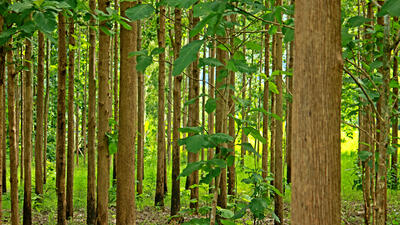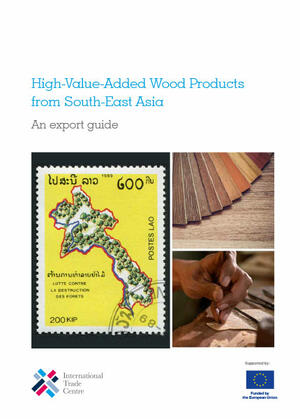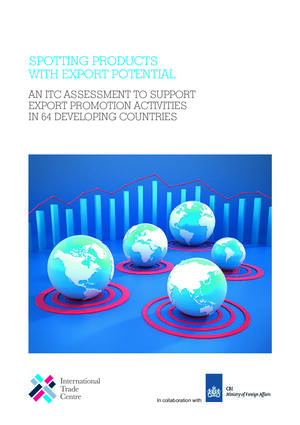


Rising timber demand in Europe unlocks opportunities for South-East Asian producers
This export guide helps small business in South-East Asia understand key market requirements, especially in terms of sustainability and quality, to enter markets for high-value processed wood.
Processed wood is a major export for many developing countries in South-East Asia, notably the Lao People’s Democratic Republic. Exporting responsibly sourced high-value wood products from these countries can drive economic growth and generate social benefits, according to a new International Trade Centre publication.
High-Value-Added Wood Products from South-East Asia: An export guide offers exporters the information they need to access and compete in markets such as the European Union (EU). It helps small and medium-sized enterprises in South-East Asia understand important market requirements – especially in terms of sustainability and quality – to enter markets for high-value processed wood items such as furniture.
‘This meticulously crafted export guide is not just a document; it’s a tool designed to provide detailed insights, strategies and practical advice, with a strong emphasis on sustainability,’ said Somvang Phimmavong, Director-General of the Lao Department of Forestry in the Ministry of Agriculture and Forestry.
The report examines national export requirements in producer countries’ legislation, highlighting the vital role of collaboration with other companies and the need for adequate technical expertise. It also identifies export challenges such as inadequate access to information, support services and finance, inefficient government services and corruption/bribery. Furthermore, it explores the role of and potential for national and international export promotion programmes.
Focus on exports to the European Union
The European Union is a major consumer of wood products, and growing demand in EU countries such as Germany and France has fuelled a rise in imports. The guide spotlights recent developments in the bloc and provides detailed information about EU import requirements, customs duties, non-tariff measures and product-specific laws – including the new European Union Deforestation-free products Regulation.
The guide also identifies products that hold promising export potential in European and other markets – such as solid wood panels, mouldings and wood flooring. By identifying high-demand products in the EU, South-East Asian companies can understand current market trends and consumer preferences, including the benefits of plantation timber versus wood sourced from natural forests.
The global outdoor furniture market alone was worth $48.4 billion in 2022 and is projected to grow to $72.8 billion by 2030, the report says. Viet Nam, Indonesia and India supply most EU imports of wooden furniture, the report finds.
The guide finds that due diligence and voluntary forest certification programmes – such as the Forest Stewardship Council or the Programme for the Endorsement of Forest Certification Schemes – can facilitate exports in the timber-processing sector.






